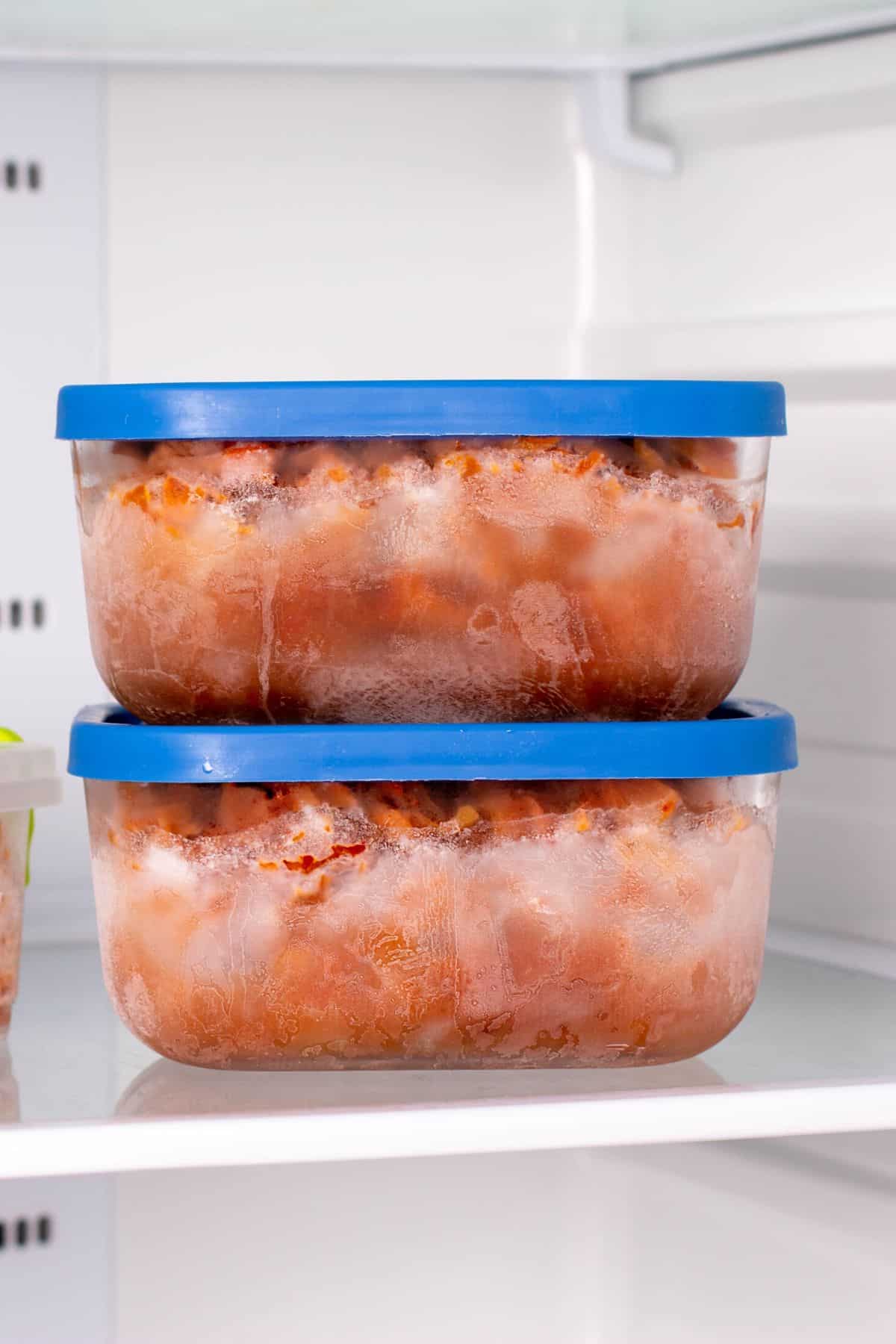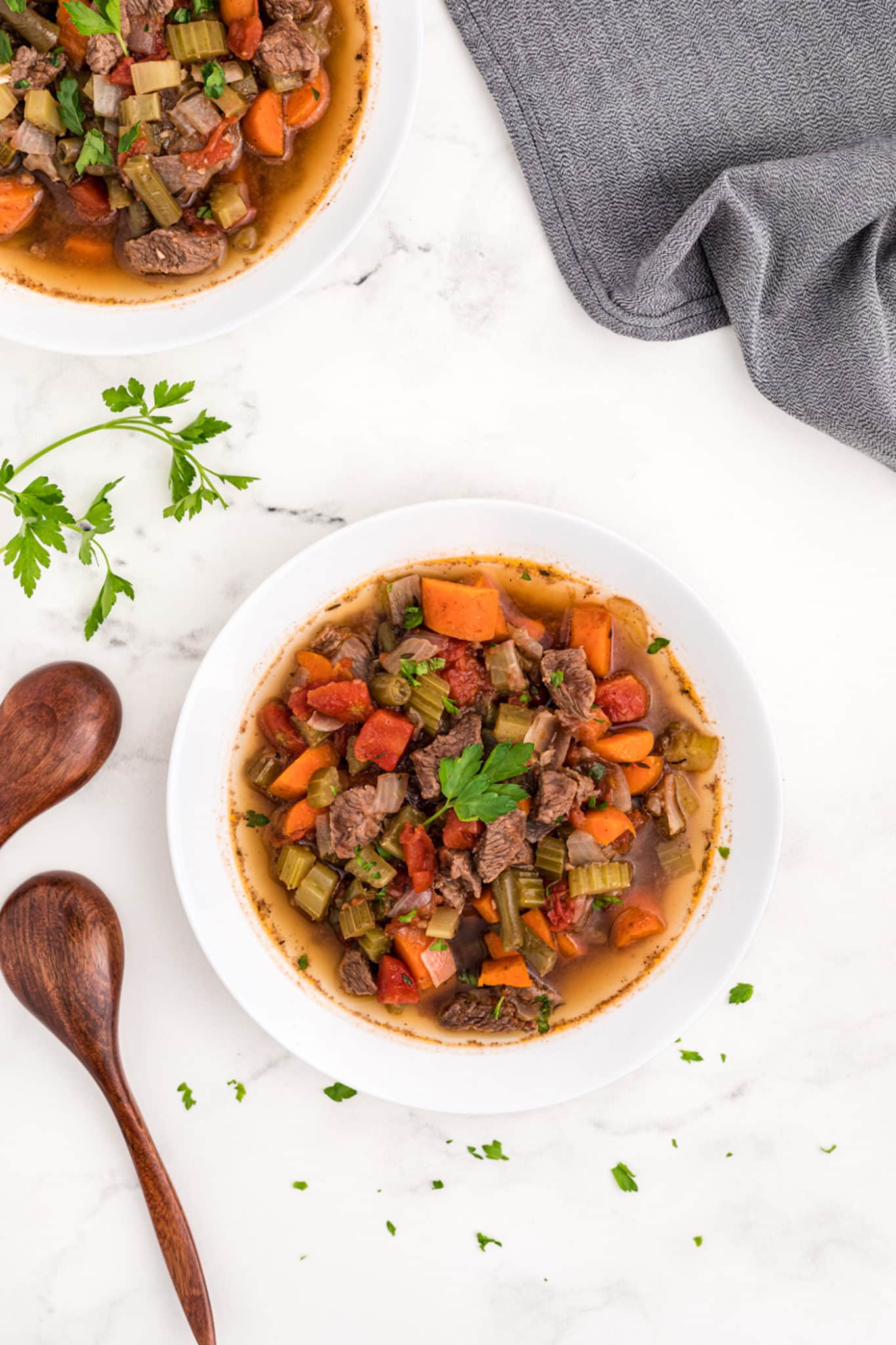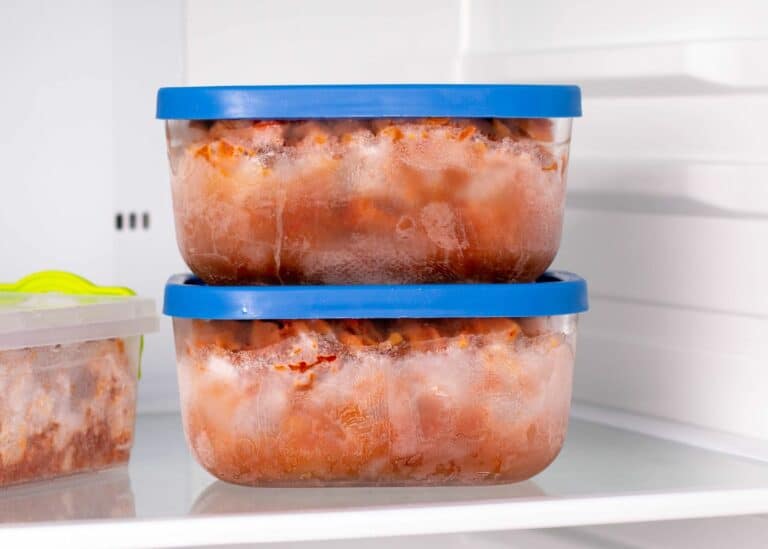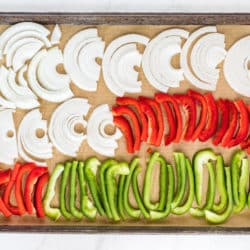How to Freeze Homemade Beef Stew (No Freezer Burn)
Beef Stew is a hearty and comforting meal that can be made on the stovetop, in the oven, in a pressure cooker or in a slow cooker. But what happens if you make too much and want to save it for later? This article will show you how to freeze beef stew without freezer burn or losing flavor.

If you think of feel-good meals for cool days, beef stew is bound to be one of them. It’s filling, satisfying, and nutritious – and you can customize it to your taste.
High-quality, grass-fed beef is highly nutritious and can help promote muscle growth and maintenance. See my guide for how to find grass-fed beef locally.
And, beef stew is a great way to serve meat because you can add lots of vegetables. This hearty dish is a complete meal in one.
Why You Need This Guide
Most cooked stews freeze relatively well, and beef stew is no different.
Freezer meals including leftover beef stew are great when you are going through a busy time. The frozen stew is ready and waiting until you’re ready to defrost it, reheat, and serve for an easy meal.
Frozen leftover homemade beef stew is one of my favorite make-ahead dishes in winter. It’s classic comfort food made with wholesome ingredients such as beef broth, chuck roast, vegetables, tomatoes, and potatoes.
You can prepare a large batch ahead of time and store portions, or you can double up every time you cook and have an extra meal safely stored in the freezer for busy days.
Key Ingredients
The only ingredient you need to freeze beef stew is the stew itself. However, some of the ingredients in the stew can affect how it freezes.
If you plan to make stew for freezing, it’s best not to thicken it unless you’re about to serve it. Thickeners like flour and cornstarch separate when frozen, giving less than optimal results.
When you reheat the stew, you can add a thickening agent. The same applies to potatoes. Although your beef stew will still be edible if you freeze it after you’ve thickened it or added potatoes, it will be better if you add them later to the reheated stew.

Special Equipment
Anyone can freeze beef stew. You don’t need any special equipment, but you may need a few items from the store if you don’t usually freeze food at home.
Airtight Containers
You’ll need airtight containers to store your beef stew in the freezer.
You can use freezer-friendly plastic containers, freezer-safe glass bowls, foil trays with tight lids, or even a sturdy resealable freezer bag if you have limited space.
Freezer Labels
If you freeze regularly, keeping freezer labels in the kitchen is an excellent idea.
You’ll know what the frozen meal is and by when you should use it. This helps you remember to use the frozen batch of beef stew before it goes beyond it’s freezer time.
If you don’t have freezer labels, you can label your beef stew the old-fashioned way – with masking tape and a permanent marker.
A Kitchen Scale
Freezing pre-weighed portions of beef stew will make your life easier when it’s time to reheat it.
You can measure out single portions or enough to feed everyone in the family for a meal. If you don’t have a kitchen scale, scoop the stew into bowls to measure portions and then into the airtight container.
Recipe Steps
Freezing beef stew is not complicated at all.
Follow these simple steps, and you’ll have a supply of delicious beef stew in your freezer, ready to be reheated and enjoyed, in no time.
Step One
After you’ve cooked the beef stew, chill it on the counter until you can transfer it to the fridge until it’s thoroughly chilled. You don’t need it to get to room temperature, but it should be cool enough to handle.
Step Two
Prepare airtight containers or foil trays with tight lids. Portion the leftover stew into the containers.
Step Three
Label the containers of beef stew and place them in the freezer, keeping them level, so they don’t leak.
Recipe Tips
- Stirring some fresh herbs into the stew when you’re ready to serve is a smart trick to hide that it’s been frozen. I like chopped flat-leaf parsley or chives.
- For the best results, leave the homemade beef stew in the fridge overnight, so the flavors have time to develop. Stew is always better the next day!
- Although beef stew freezes really well, you may still notice it’s been reheated because of slight textural and flavor changes, especially if you add thickener or potatoes. If you are cooking beef stew intending to freeze it, thicken it and add your potatoes when you reheat it.
Recipe FAQs
As long as you’ve sealed the container well, the beef stew will keep for around four to six months. The flavor and texture will be affected the longer it’s frozen.
No, dumplings don’t freeze well. They lose firmness and fall apart when you reheat them. Making some fresh dumplings when you’re reheating the beef stew is best.
If you plan to have the beef stew the following day, it’s best to keep it in the fridge overnight as it slowly thaws. If you’re in a rush, you can defrost the beef stew in a saucepan or microwave. Get the frozen beef stew out of the container, and run it under cold water until it loosens up.
If you’re using a microwave, place it in a microwave-safe container and stir at intervals throughout the defrosting process (some microwaves also have a defrost setting you can use). For thawing in a saucepan, add the beef stew to the pan and slowly heat it on the lowest setting on your stovetop (over low heat) until it’s fully thawed.
You can, but I don’t recommend it. It’s best to eat thawed beef stew within three or four days. Refreezing stew that’s been thawed in the fridge is the safest.
Yes, you could technically freeze the ingredients for beef stew including raw meat, chopped vegetables, and broth in a heavy-duty freezer bag until you are ready to cook. I would leave out any potatoes and add those when you actually cook the stew for the best quality.
More Hearty Stew Recipes You Might Like
- Crockpot Coconut Chicken Stew
- Venison Stew
- Instant Pot Vegan Stew with Chickpeas
- Vegetable Stew with Potatoes
- Instant Pot Chicken Soup with Potatoes
Don’t Miss These Freezer Guides
I hope you make this recipe! If you do, please leave a comment and a starred review below.
And, consider following me on social media so we can stay connected. I’m on Facebook, Pinterest, Instagram, and YouTube!

How to Freeze Beef Stew (No Freezer Burn)
Beef Stew is a hearty and comforting meal that can be made on the stovetop, in the oven, in a pressure cooker or in a slow cooker. But what happens if you make too much and want to save it for later? This article will show you how to freeze beef stew without freezer burn or losing flavor.
- Total Time: 3 hours 45 minutes
- Yield: 3 servings
Ingredients
- 4 cups prepared beef stew
Instructions
- Prepare your beef stew using your favorite recipe.
- Leave the cooked beef stew on your kitchen counter until it’s cool enough for the fridge. Keep it in the refrigerator until it’s thoroughly chilled.
- Prepare airtight containers or foil trays with tight lids ensuring they’re lined up and open, ready for the stew.
- If you have a kitchen scale, weigh out individual portions of the beef stew and place them in the containers. Remember that the stew will expand when it freezes, so leave around half an inch from the top of the lid to accommodate this.
- Label the containers with the portion size, what it contains, and the date.
- Freeze for two to three hours, keeping the containers level to avoid leakage.
Notes
- Thickeners like cornstarch or flour will separate from the liquid once the beef stew begins to freeze. Because of this, it’s best not to thicken the stew until you’re ready to reheat and eat it.
- Potatoes will lose some texture during freezing, so it’s best not to freeze beef stew containing potatoes.
- When you reheat the beef stew, stir fresh herbs like parsley through. It gives it a freshly cooked taste, so nobody will know it was frozen!
- Stew always tastes better the next day. You can freeze the beef stew as soon as it’s cooled enough, but if you leave it in the refrigerator overnight, it will intensify the flavor!
- Prep Time: 15 minutes
- Freezing Time: 3 hours
- Category: Main Dish
- Method: Freezer
- Cuisine: American
- Diet: Gluten Free
Nutrition
- Serving Size: 1/3 of recipe
- Calories: 259
- Sugar: 4.6 g
- Sodium: 1014 mg
- Fat: 14.5 g
- Saturated Fat: 5.7 g
- Trans Fat:
- Carbohydrates: 20.5 g
- Fiber: 2.4 g
- Protein: 11.5 g
- Cholesterol: 34 mg
Don’t forget to join my newsletter list to get exclusive clean eating recipes and tips. The newsletter is 100% free with no spam; unsubscribe anytime.
About the Author: Carrie Forrest has a master’s degree in public health with a specialty in nutrition and is a certified holistic nutritionist. She is a top wellness and food blogger with over 5 million annual visitors to her site. Carrie has an incredible story of recovery from chronic illness and is passionate about helping other women transform their health. Send her a message through her contact form.





















loved this recipe but have a question on food safety. Can i thaw a frozen rump roast, pressure cook it with vegetables & then freeze that stew, even though the original meat was previously frozen?
Yes it is safe from a food safety perspective, but the quality of the food can de-grade depending on how many times it is thawed and re-frozen.
One of my favorite meals to save for later! Yummy.